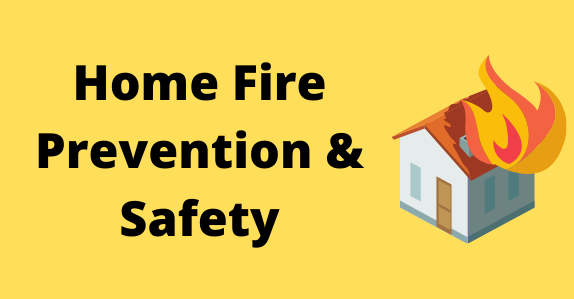Fire safety is a priority for homeowners, especially those living in areas with dry conditions or near wildland-urban interfaces. While cities like Austin, Texas, are less prone to large-scale wildfires compared to places like California, homeowners can still take proactive steps to protect their properties and neighborhoods. From installing sprinklers to creating defensible space, here are actionable ways to reduce the risk of fire damage to your home and surrounding area.
1. Install Fire Sprinkler Systems
One effective and innovative strategy is to install sprinklers on your home’s roof or exterior. As demonstrated by one Austin-area homeowner during a previous fire, rooftop sprinklers can keep surfaces cool and wet, reducing the chances of embers igniting your home. Sprinkler systems can also be installed around the perimeter of your property to create a barrier of moisture during dry or high-risk periods. While this approach requires an upfront investment, it’s an excellent way to add an extra layer of protection to your home.
2. Create Defensible Space
Defensible space is an area around your home where vegetation and flammable materials are minimized to slow the spread of fire. The goal is to create buffer zones that prevent a wildfire from reaching your home. Here’s how you can create defensible space:
- Zone 1 (0-5 feet from your home): Keep this area free of flammable materials like dry leaves, woodpiles, and shrubs. Use non-combustible materials like gravel or stone for landscaping close to your home.
- Zone 2 (5-30 feet from your home): Prune tree branches so they’re at least 10 feet away from other trees and structures. Remove dead plants and ensure that grass is kept short and well-watered.
- Zone 3 (30-100 feet from your home): Thin out dense vegetation and trim trees to create more space between them. This zone helps slow the fire’s spread and reduces its intensity before it reaches your home.
3. Use Fire-Resistant Building Materials
If you’re building or renovating your home, consider using fire-resistant materials to reduce its vulnerability. Here are some smart choices:
- Roofing: Opt for materials like metal, clay tiles, or asphalt shingles with a Class A fire rating.
- Siding: Use non-combustible materials such as stucco, brick, or fiber cement siding.
- Windows: Install dual-pane or tempered glass windows, which are less likely to break from heat exposure.
- Decks and Fences: Build these structures using fire-resistant materials like composite decking or treated wood.
4. Clear Gutters and Roofs
Embers from wildfires can easily ignite dry debris, so keeping your gutters and roof clear of leaves, twigs, and other flammable materials is essential. Regular maintenance, especially during high-risk fire seasons, can significantly reduce the chance of embers starting a fire on your property.
5. Install Ember-Resistant Vents
Embers can enter your home through vents and ignite flammable materials inside. Installing ember-resistant vent covers, such as those made with 1/8-inch metal mesh, can block embers while still allowing proper airflow for your home. This small upgrade can make a big difference in preventing fire from spreading indoors.
6. Maintain a Safe Perimeter
Store firewood, propane tanks, and other flammable items at least 30 feet away from your home or any structures. Additionally, keep plants and shrubs trimmed and away from exterior walls, as overgrown vegetation can act as a fire bridge to your home.
7. Plan and Practice Evacuation Routes
Even with all precautions in place, it’s essential to have an evacuation plan in case of a fire. Make sure your family knows the safest and quickest ways to leave your home and neighborhood, and practice these routes regularly. Keep emergency supplies, important documents, and valuables in an easily accessible location for quick grab-and-go scenarios.
8. Get Involved in Community Fire Prevention
Fire safety is a community effort. Joining or organizing neighborhood initiatives, like a Firewise USA group, can help spread awareness and ensure everyone takes steps to reduce fire risks. Communities that work together to clear brush, maintain defensible space, and plan evacuation routes are far better prepared to prevent and respond to fires.
9. Install Exterior Fireproof Shutters
Exterior shutters made from non-combustible materials like steel can protect your windows and doors from radiant heat and flying embers. These shutters can be closed during high-risk fire conditions to add another layer of protection to your home.
10. Stay Alert During High Fire Risk Periods
Pay attention to local fire warnings and weather updates, especially during dry or windy periods. Apps like the Ready, Set, Go! wildfire preparedness app can provide real-time alerts and tips tailored to your area. Staying informed helps you take action before a fire becomes a direct threat.
Why Austin Is a Safe Bet for Homeowners
While fires do occasionally occur in and around Austin, the city’s proactive measures and relatively low risk of large-scale wildfires make it a safer choice compared to regions like California. Combined with strategies like creating defensible space and using fire-resistant materials, Austin homeowners can feel confident about protecting their properties.
If you’re looking to buy or sell a home in Austin and want advice on finding properties with low fire risk or safety-enhancing features, working with an experienced realtor in Austin is your best bet. A knowledgeable realtor can guide you toward neighborhoods and homes that align with your safety priorities while fitting your lifestyle.
Contact Brendan Sanford today at (512) 696-0673 or email him at [email protected] to explore Austin’s real estate market. With the help of an experienced realtor in Austin, you can find a home that’s safe, comfortable, and perfect for your needs.
